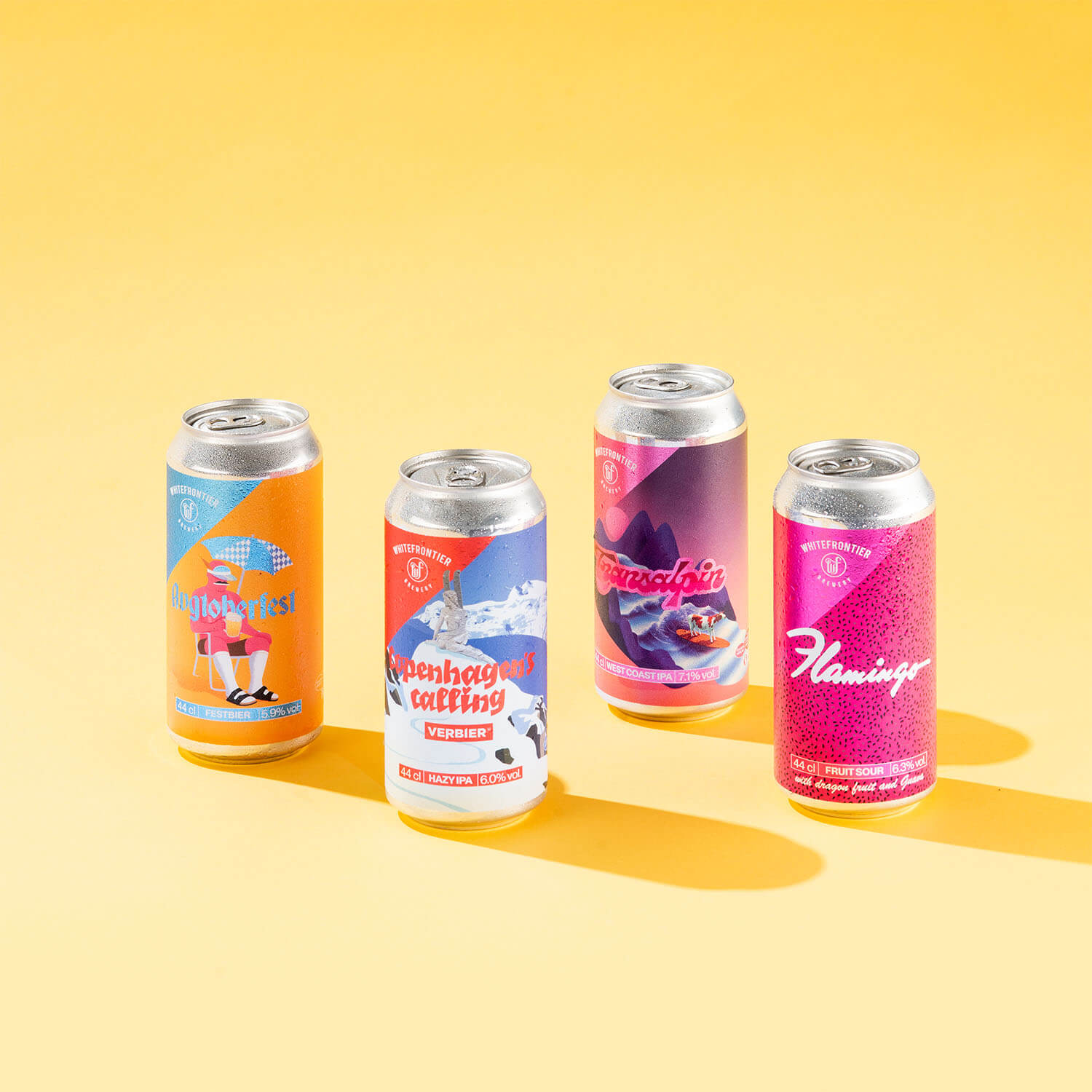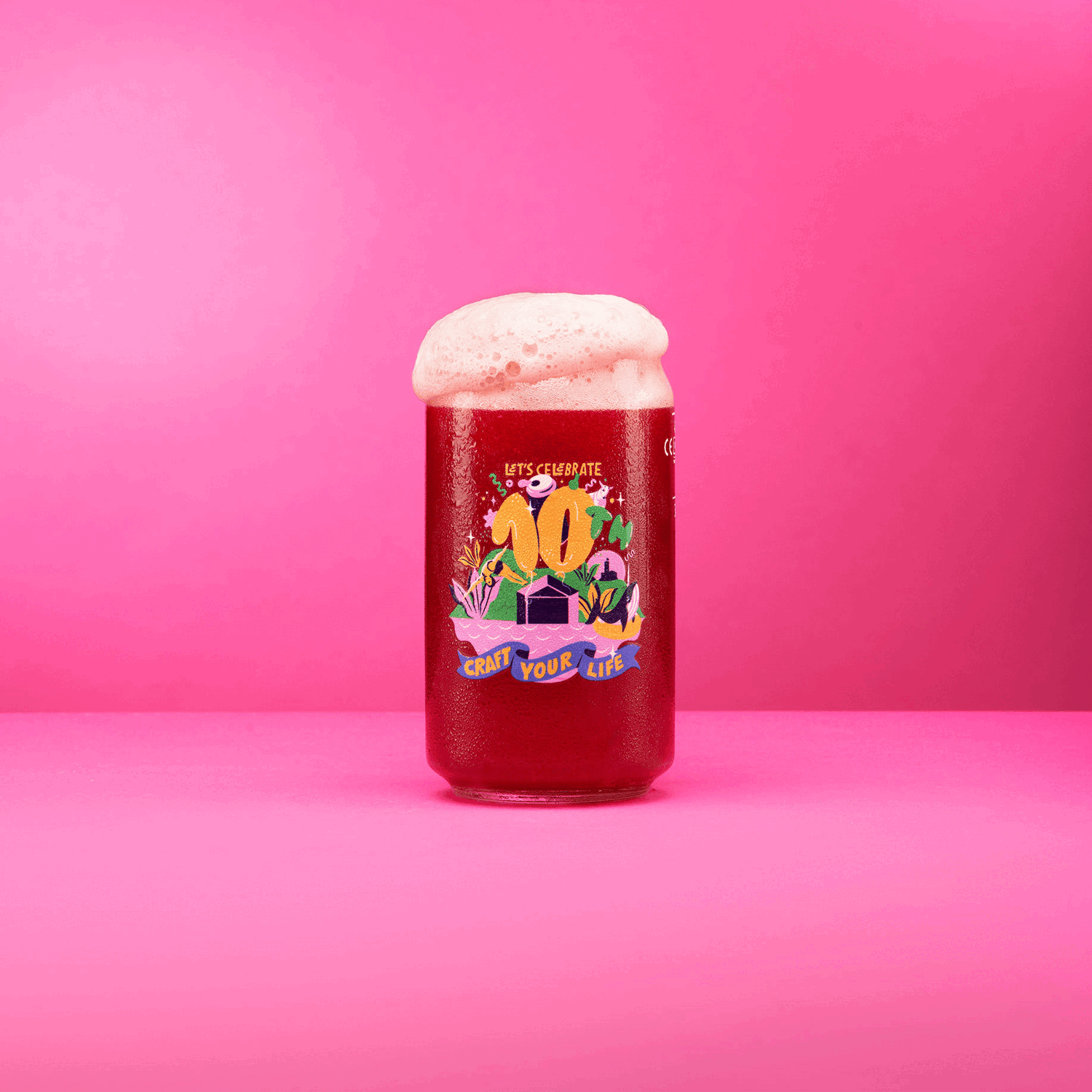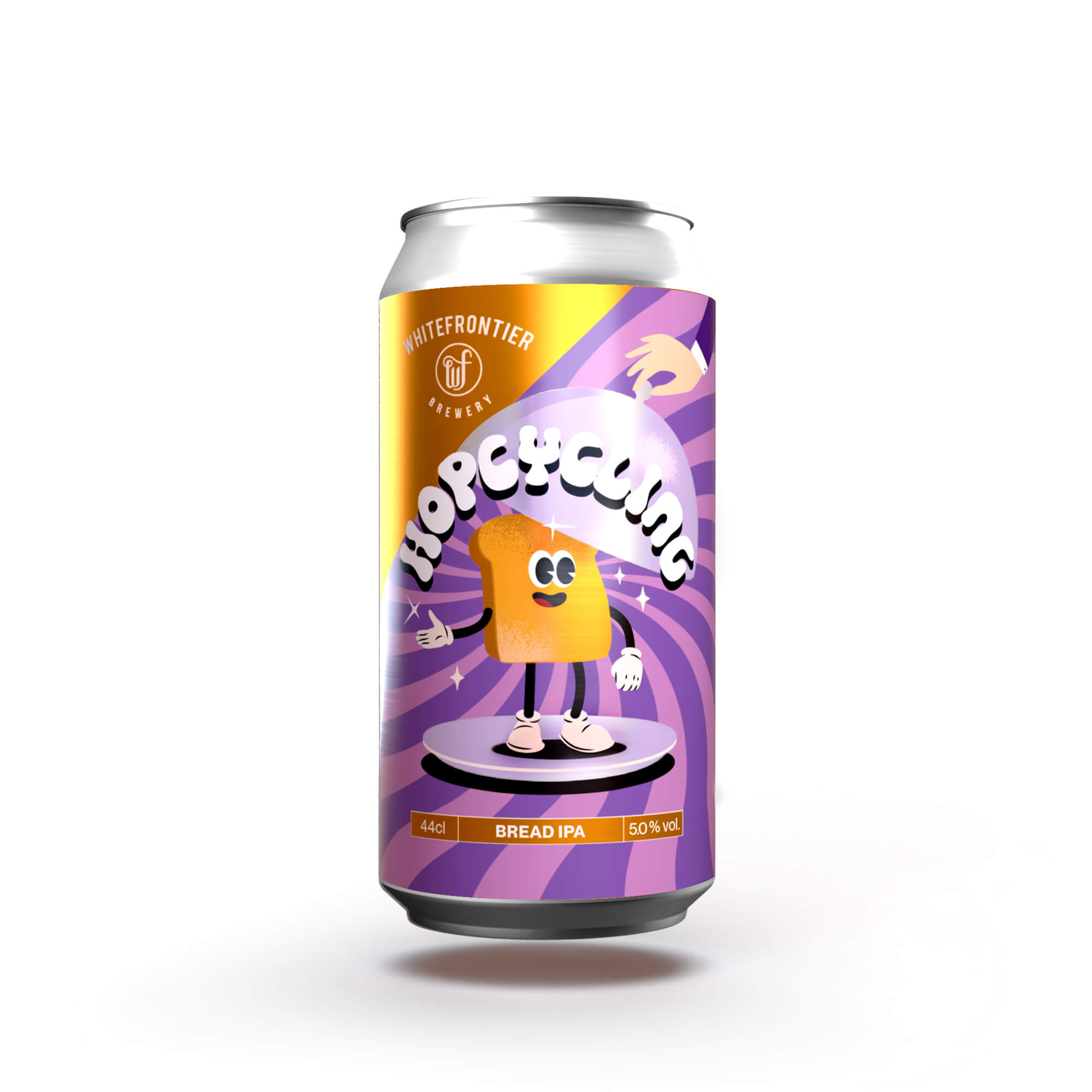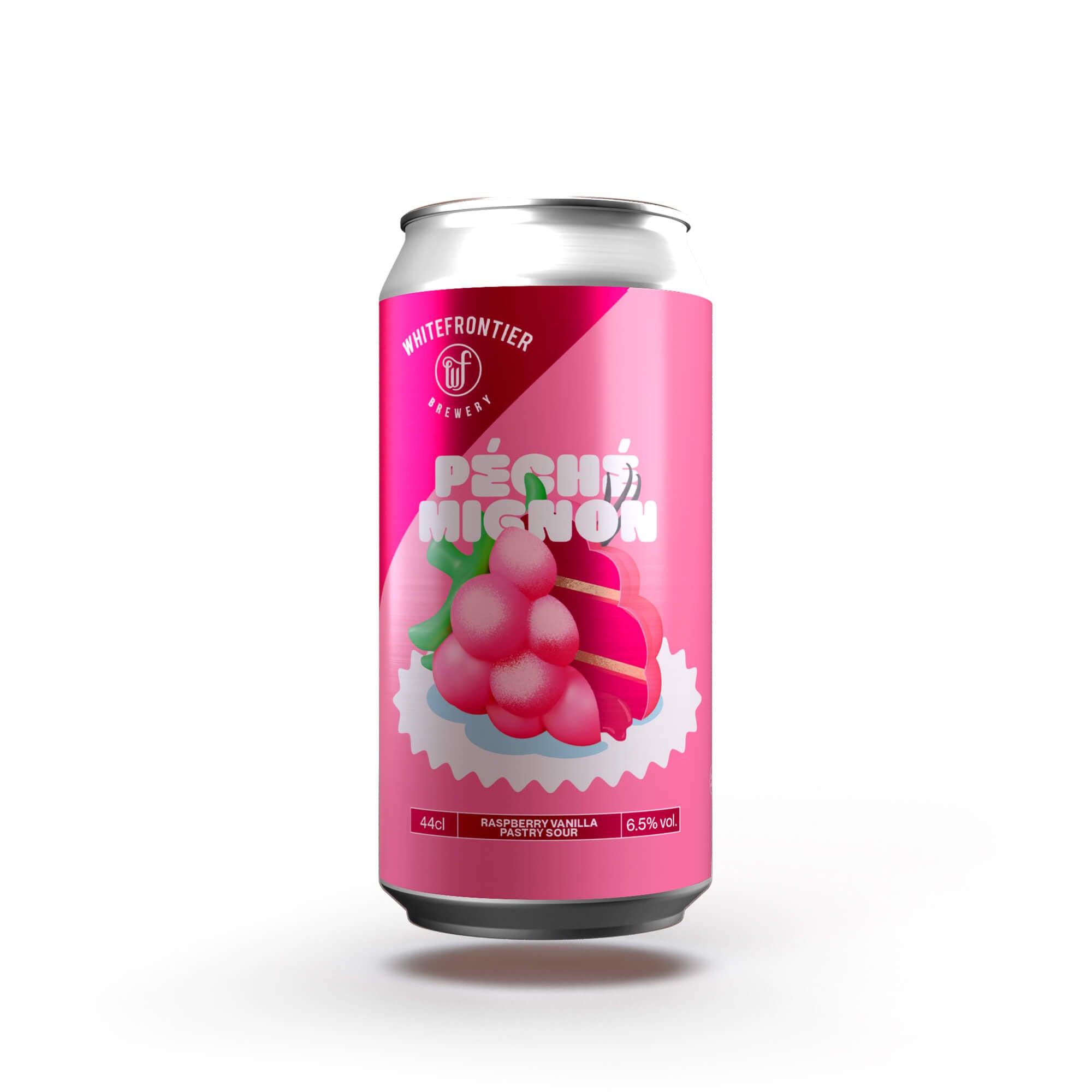No time to read this article, but the subject interests you? Listen to the latest episode of our podcast right here. Find all our podcasts on this page.
Today's beer drinker is above all looking for meaning. They're looking for creativity and authenticity. A brewery's values now count in the buyer's choice. But that's not all. More and more consumers are paying attention to their health and the environment. We're seeing the emergence of many alcohol-free or low-alcohol beers. Many ephemeral beers are being created in collaboration with local players. The notion of sustainability has also emerged.
So I'm going to list the major trends for the future.
THE NEIPAs

Wow, calm down! I can already see the beer lovers getting offended and leaving a comment telling us that "this is clearly not a new trend".
Yes, that's right, it's nothing new for you, beergeek that you are. WhiteFrontier even released its first NEIPA in 2017. If you remember, the famous Unicorne!
What's the difference between a NEIPA and an IPA?
First, let us tell you that a NEIPA is an IPA.NEIPA stands for NEW ENGLAND IPA. It's an IPA, but with its own characteristics. They originate in New England in the United States. What makes them special is their fruity aroma and mellow bitterness. Many aromatic hops are used to draw out their fruity profile. They are generally cloudy and bright blond or even orange in color.
Here are a few we recommend :
1. Whitefrontier has just released RULE NUMBER 1, a new england IPA in collaboration with Italian brewery Ritual Lab. What makes it special? As well as being a super-fruity new england, this beer has been brewed without the "boiling" stage to radically reduce energy consumption.

2. Qrew, the brewery of the Swiss QoQa group, also offers excellent New England ipa.
3. It's hard not to mention the Valais brewery HoppyPeople when talking about New England.
4. Chamonix's Big Mountain brewery or Sallanche's Outer Range.
5. The Tingle Tangle brewery in Zurich regularly offers New England ipa.
Local and the quest for meaning
More than ever, consumers are looking for meaning. They are looking for breweries that are at least Swiss, and if possible close to home. Breweries that have values, are rooted in their terroir, contribute to regional development and are committed. There are many ways to get involved: you can innovate your products, support associations and local personalities, think about how to optimize your energy consumption, and so on. So yes, a local brewery that makes good beers and is also committed is the future of the sector.The Malternative brewery in Martigny, for example, makes organic beers with local ingredients. This is clearly a challenge that needs to be recognized. Making organic beers with only local ingredients closes the field of possibilities and therefore greatly limits creativity. Yet Malternative still manages to offer a wide range of beers, and for that they are to be congratulated.WhiteFrontier supports personalities. We call them our crafters. What's more, we make many beers in collaboration. We could mention Zytho, created to open a women's bourse, Menu, in collaboration with the Touristes chefs and the IRIS company, Fruits de Martigny or HopCylcing, a beer made in collaboration with the Michellod bakery. We got hold of hard bread, which can no longer be sold, to brew. This is what we call UP-cycling. Instead of throwing it away, we transform it into a completely different product. As you know, beer is made from cereals, mainly barley, but also wheat, rye, oats and so on. But bread is made from cereals. So we replaced 20% of the malt with bread to brew this IPA.Healthy beers
For many years now, the Swiss have been attaching particular importance to their health, particularly through the products they eat, drink and put on their skin. The brewing industry, too, has had to adapt. And while alcohol is not necessarily synonymous with health, it is possible to make healthier beers.As a result, more and more alcohol-free or low-alcohol (1-3%) beers are appearing. These beers now meet consumers' taste requirements. Breweries are innovating, offering alcohol-free or low-alcohol IPAs, sours and stouts.Gluten-free beers have also made their appearance.You'll find plenty of them on the miseenbiere.ch website, or at encire e-pik.ch.We can also imagine that low GI (glycemic index) beers will soon be appearing.Take a look at the Whitefrontier website and you'll find all kinds of beers, including low-alcohol beers.Creativity in the spotlight
Trends also include everything to do with creativity. The more a brewery surprises us with new brewing techniques, special ingredients, emerging hops or yeasts, the more delighted consumers will be.This is how we've seen the emergence of new types of hops, yeasts, original ingredients or innovative brewing techniques.At WhiteFrontier, you'll find Malto, a white beer with experimental hops, Rule Number One, which uses a very specific brewing technique, Menu with its yarrow, Hopcycling with stale bread and many others.

Ovens and pastries
It's hard to miss the famous sours beers, especially the pastry beers featured in this article.
On our eshop, you'll find Mango Bomb, Péché Mignon, Menu and Don't Be Weird.

On the pastry side, of course, there's the excellent Swedish brewery Brewski.
Hybrid beers
Hybrid beers are the "beyond beer" trend. Breweries no longer hesitate to break codes and step out of their own world to create beverages that never existed before. That's how hard seltzers, the big bosses of RTDs (ready-to-drink), came into being.
So what does this mean for a brewery?
The hybrid movement in brewing is still very new, and I imagine it's going to grow a lot. But today, you can see "hop waters" on the shelves of your favorite beershops. In the same vein, we've seen cold hop teas and lemonades. Rosé beers or "grappe ales" are also part of this trend. Rarer now are beers with "alicaments". By this we mean beers with vitamins, spirulina or CBD. Of course, this doesn't take away from the fact that beer is alcoholic, so the "healthy" aspect is diminished.
But finally, the top of the trend is "hybrid beers": viers, or the art of mixing beer and wine. And yes, viers are the fashion of the moment. Often available in 75cl bottles, these beers plunge headlong into the codes of wine. Here's a beer that's tangy, very fizzy, with aromatic notes that approach those found in our wines.
We would certainly mention the À tue tête brewery, which produces beers that come close to a sparkling, tangy wine. Then there's Gallia Paris, which has registered the name "Vières", a contraction of wine and beer. Finally, the Famille Rouvinez brewery produces two beers, l'échappée and l'Élégante, inspired by the world of wine from which they originate.
If you like new and creative products, join our beerclub.

Allez ciao, et n’oublie pas : Craft your life























